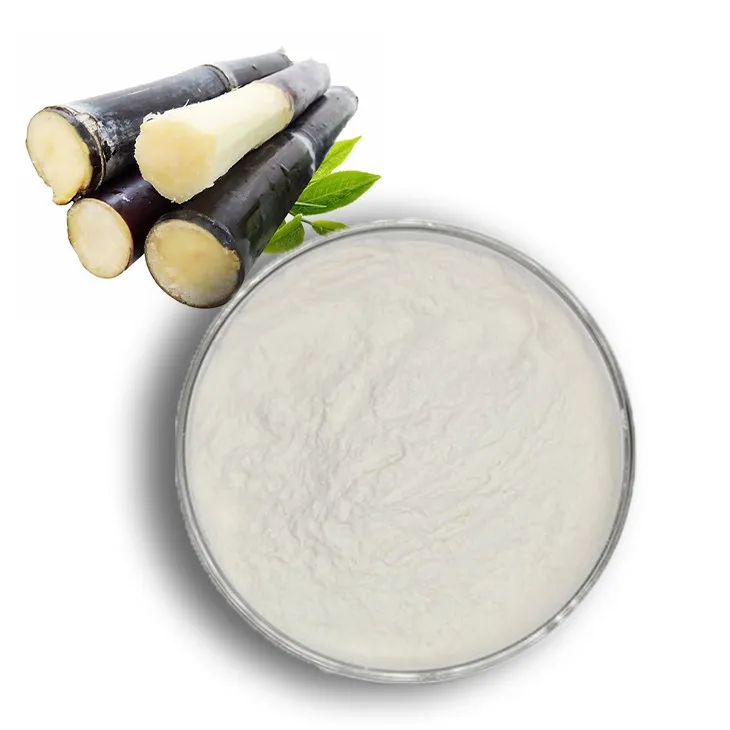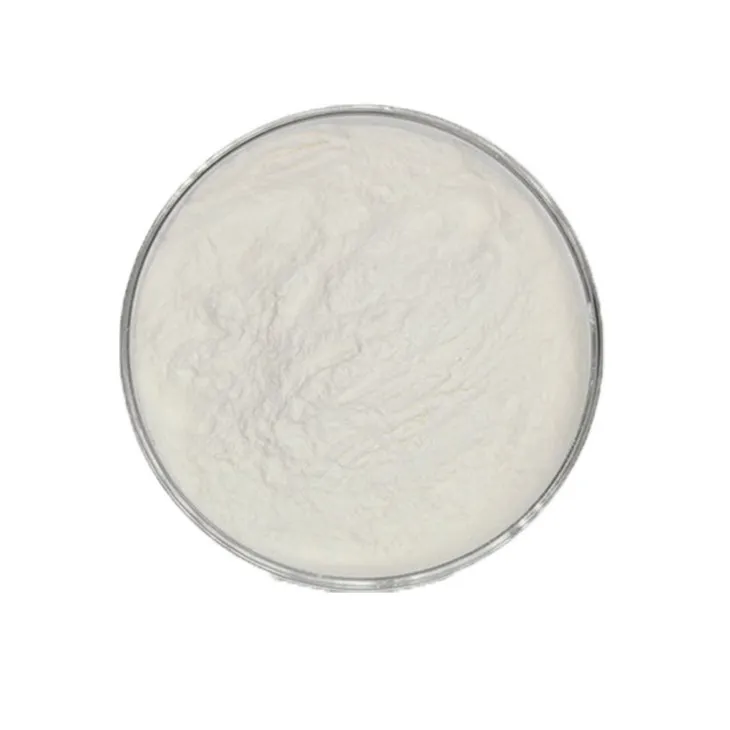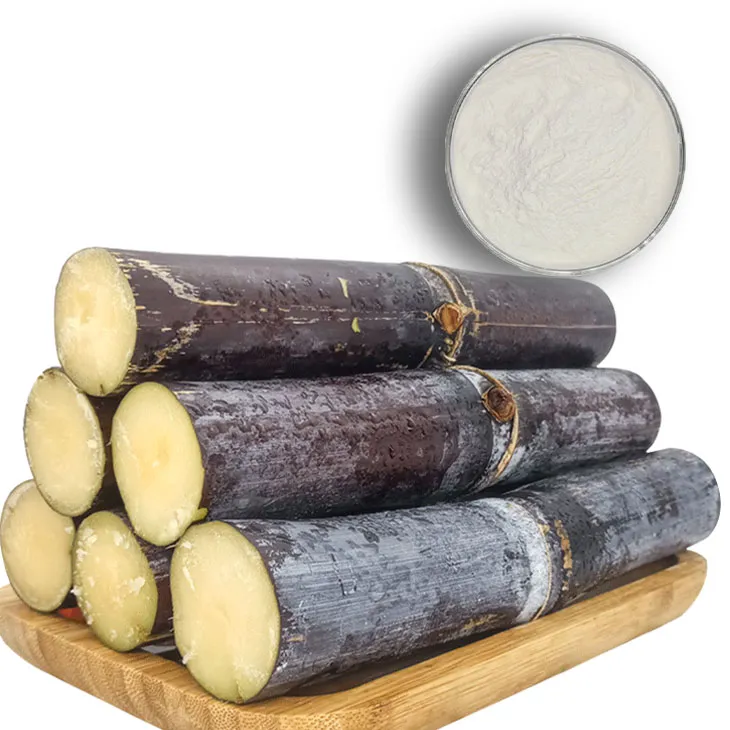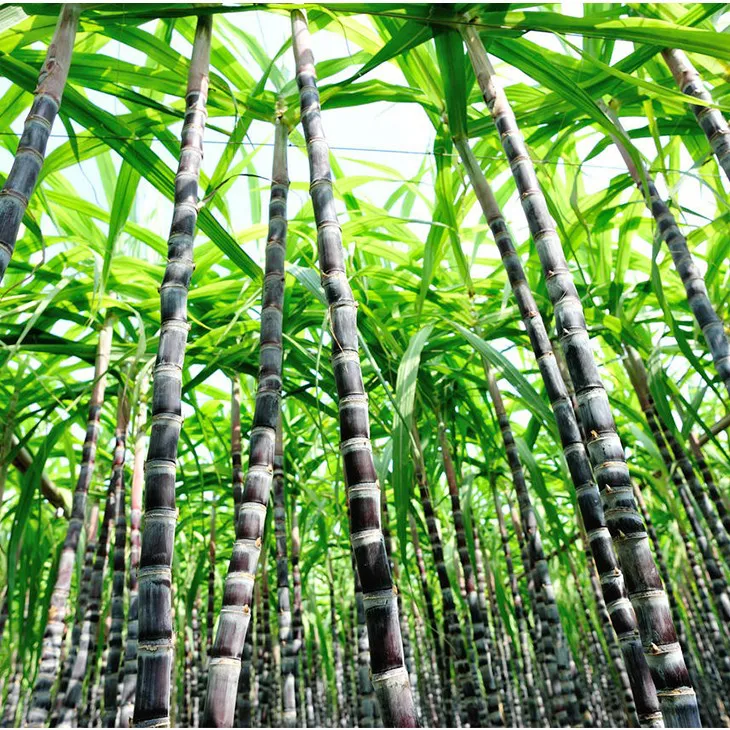- 0086-571-85302990
- sales@greenskybio.com
The process of extracting characteristic components of sugarcane from sugarcane extracts.
2024-11-26

1. Introduction
Sugarcane is a widely cultivated plant that holds significant economic value. Sugarcane Extracts are rich sources of various components, which have great potential in different industries. The extraction of characteristic components from Sugarcane Extract is a topic of great interest in the fields of food science, medicine, and cosmetics. This process not only helps in maximizing the utilization of sugarcane but also in discovering new products with unique properties.

2. Pretreatment of Sugarcane Extract
2.1 Removal of Impurities
The first step in extracting characteristic components from sugarcane extract is the pretreatment process. The raw sugarcane extract usually contains impurities such as dirt, debris, and other unwanted substances. These impurities can interfere with the subsequent extraction and purification processes.- Filtration: Filtration is a commonly used method to remove solid impurities from the sugarcane extract. It can be carried out using different types of filters, such as filter papers or membrane filters. The pore size of the filter determines the size of the particles that can be removed. For example, a filter with a small pore size can effectively remove fine dirt particles.
- Centrifugation: Centrifugation is another important technique for impurity removal. By spinning the sugarcane extract at high speeds in a centrifuge, the denser impurities are forced to the bottom of the container, while the supernatant, which is the purified extract, can be collected. This method is particularly useful for removing insoluble particles and some large - molecular - weight impurities.

3. Isolation and Purification of Characteristic Components
After the pretreatment process, the next step is to isolate and purify the characteristic components of sugarcane. Different techniques are available for this purpose, depending on the nature of the components to be extracted.
3.1 Chromatography
- Principle: Chromatography is based on the differential distribution of components between a stationary phase and a mobile phase. Different components in the sugarcane extract will interact differently with the stationary and mobile phases, resulting in their separation. For example, in liquid chromatography, the mobile phase is a liquid solvent, and the stationary phase can be a solid adsorbent or a chemically bonded phase on a solid support.
-
Types of Chromatography: There are several types of chromatography that can be used for sugarcane component extraction.
- High - Performance Liquid Chromatography (HPLC): HPLC is a widely used chromatographic technique in the analysis and purification of sugarcane components. It offers high resolution and sensitivity. In HPLC, the sample is injected into a column filled with the stationary phase, and the mobile phase is pumped through the column at a high pressure. Different components will elute from the column at different times, allowing for their separation and collection.
- Gas Chromatography (GC): GC is mainly used for the analysis of volatile components in sugarcane extracts. The sample is first vaporized and then carried through a column by an inert gas (the mobile phase). The components are separated based on their different affinities for the stationary phase in the column. However, GC requires that the analytes be volatile, which may limit its application for some non - volatile sugarcane components.
3.2 Distillation
- Principle: Distillation is a process based on the difference in boiling points of the components in the sugarcane extract. When the extract is heated, the components with lower boiling points will vaporize first, and can be separated from those with higher boiling points.
- Simple Distillation: Simple distillation is suitable for separating components with a relatively large difference in boiling points. In this process, the sugarcane extract is heated in a distillation flask, and the vapors are condensed and collected in a receiving flask. For example, if there are volatile oils in the sugarcane extract with a much lower boiling point than other components, simple distillation can be used to isolate them.
- Fractional Distillation: When the components in the sugarcane extract have relatively close boiling points, fractional distillation is required. This method uses a fractionating column, which provides more opportunities for the vapors to condense and re - vaporize, resulting in better separation of the components.

4. Applications of Characteristic Components of Sugarcane
The characteristic components of sugarcane obtained through the extraction process have diverse applications in various industries.
4.1 Food Industry
- Sweeteners: Some components of sugarcane, such as sucrose, are widely used as sweeteners in the food industry. Sucrose provides the characteristic sweet taste in many products, including candies, beverages, and baked goods.
- Flavorings: Other components can contribute to the unique flavor of food products. For example, certain esters and aldehydes present in sugarcane extracts can add fruity or floral notes to food items.
- Nutritional Supplements: Sugarcane also contains vitamins, minerals, and other nutrients. These can be extracted and used in the formulation of nutritional supplements.
4.2 Medicine Industry
- Antioxidants: Some of the characteristic components of sugarcane, such as phenolic compounds, have antioxidant properties. These antioxidants can help in protecting cells from oxidative damage, which is associated with various diseases, including cancer and heart disease.
- Anti - inflammatory Agents: Certain components may possess anti - inflammatory properties. They can be used in the development of drugs for treating inflammatory conditions, such as arthritis.
- Wound Healing: Extracts from sugarcane may also have properties that promote wound healing. This could be due to the presence of growth factors or other bioactive molecules.
4.3 Cosmetics Industry
- Moisturizers: Components like polysaccharides in sugarcane can be used in cosmetics as moisturizers. They can help in retaining moisture in the skin, keeping it hydrated and smooth.
- Anti - aging Products: The antioxidant components of sugarcane can also be incorporated into anti - aging cosmetics. They can prevent the formation of wrinkles and other signs of aging by reducing oxidative stress on the skin.
- Skin Brighteners: Some sugarcane components may have the ability to brighten the skin, reducing the appearance of dark spots and improving overall skin complexion.

5. Conclusion
In conclusion, the process of extracting characteristic components from sugarcane extracts is a multi - step and complex procedure. It begins with the pretreatment of the extract to remove impurities, followed by the isolation and purification of the desired components using techniques such as chromatography and distillation. The characteristic components of sugarcane have wide - ranging applications in the food, medicine, and cosmetics industries. Continued research in this area is likely to lead to the discovery of more valuable components and the development of new products with enhanced properties.
FAQ:
What are the common impurities in sugarcane extracts?
Common impurities in sugarcane extracts include dirt, small pieces of plant debris, and some soluble minerals that are not part of the characteristic components. These impurities can affect the quality and purity of the final product if not removed properly.
How does filtration work in the pre - treatment of sugarcane extracts?
Filtration in the pre - treatment of sugarcane extracts typically involves passing the extract through a filter medium. The filter medium has pores that are small enough to trap larger particles of impurities such as dirt and debris while allowing the liquid containing the sugarcane components to pass through.
Why is centrifugation used in the pre - treatment process?
Centrifugation is used in the pre - treatment process because it can separate substances based on their density differences. In sugarcane extracts, centrifugation can help to remove denser impurities that may not be effectively removed by filtration alone, such as some insoluble solids that might be heavier than the liquid part of the extract.
What types of chromatography are suitable for isolating sugarcane characteristic components?
There are several types of chromatography that can be suitable for isolating sugarcane characteristic components. High - performance liquid chromatography (HPLC) is often used due to its high precision and ability to separate complex mixtures. Gas chromatography (GC) can also be applicable for certain volatile components in the sugarcane extract.
How are the characteristic components of sugarcane used in the food industry?
In the food industry, the characteristic components of sugarcane can be used in various ways. For example, certain flavor - enhancing components can be added to beverages or confectionery products. Some components may also contribute to the texture or preservation of food items.
Related literature
- Extraction and Characterization of Bioactive Compounds from Sugarcane"
- "Sugarcane Extracts: Composition, Properties and Applications"
- "Advanced Techniques for Isolating Components from Plant Extracts: A Focus on Sugarcane"
- ▶ Hesperidin
- ▶ citrus bioflavonoids
- ▶ plant extract
- ▶ lycopene
- ▶ Diosmin
- ▶ Grape seed extract
- ▶ Sea buckthorn Juice Powder
- ▶ Beetroot powder
- ▶ Hops Extract
- ▶ Artichoke Extract
- ▶ Reishi mushroom extract
- ▶ Astaxanthin
- ▶ Green Tea Extract
- ▶ Curcumin Extract
- ▶ Horse Chestnut Extract
- ▶ Other Problems
- ▶ Boswellia Serrata Extract
- ▶ Resveratrol Extract
- ▶ Marigold Extract
- ▶ Grape Leaf Extract
- ▶ blog3
- ▶ blog4
-
Chinese Withania somnifera Extract Factory.
2024-11-26
-
中国松树皮提取物粉粉末供应商
2024-11-26
-
High - quality Marigold Extract Products.
2024-11-26
-
100% Pure Natural Mango - Flavored Powder.
2024-11-26
-
Fig Extract
2024-11-26
-
Honeysuckle Pollen
2024-11-26
-
Carrageenan Extract Powder
2024-11-26
-
Elderberry Extract
2024-11-26
-
Mulberry Extract
2024-11-26
-
Cranberry Extract
2024-11-26
-
Saw Palmetto Extract
2024-11-26
-
Cactus Extract
2024-11-26
-
Milk Thistle Extract
2024-11-26
-
Golden Seal Extract
2024-11-26





















